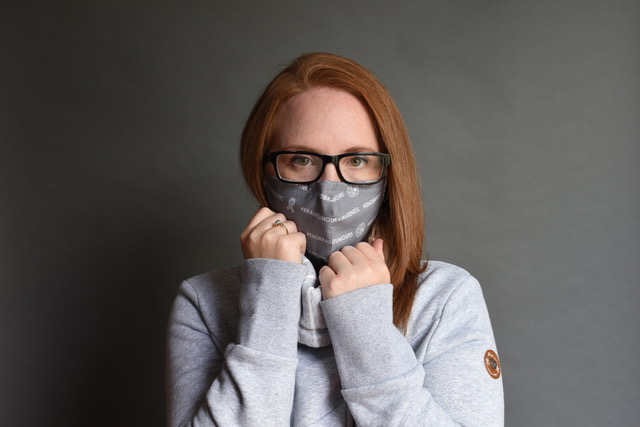
My Story with a Hormone Secreting Tumour
It was only three days after Megan Cavender celebrated her 29th birthday, when she gave birth to her third child.
“All three of my pregnancies had gone well with no sickness or strange cravings. My children were all delivered naturally with no significant complications,” she says.
Despite nursing her youngest daughter for a longer timeframe, she expected her menstrual cycle to start and regularly continue, just as it did after her first two children were born.
“A month had passed, then two—but thankfully the next month it came and the one after that, but then it stopped again,” remembers Megan. 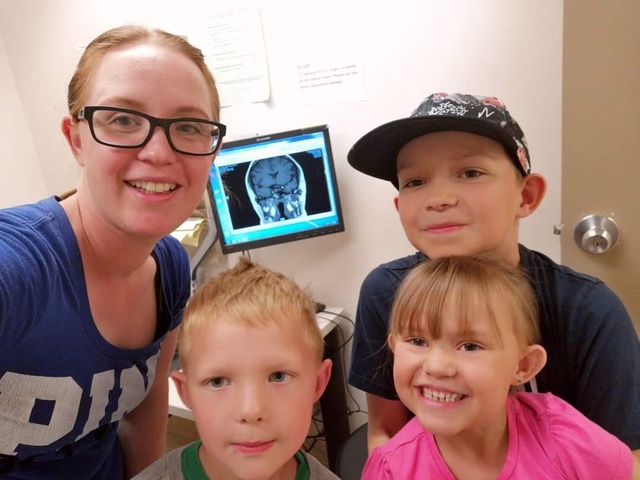
Concerned that she may be pregnant again, she consulted her doctor to be tested, which showed a negative result. Her doctor assured her that after three children, her body may be needing more time to fully recover.
However, the irregular cycle continued for a year until it stopped altogether. Something was not right.
“I went back to my doctor to ask if I was going to be healthy without having a period. He suggested I might be going through perimenopause,” she explains.
Megan’s doctor requested blood work, along with dietary changes and increasing exercise. Although there was a slight elevation in her cortisol and testosterone levels, the doctor tried reassuring her that this was not a cause for concern.
“I had not lost the baby weight yet; in fact, I was gaining weight,” she states, having diligently exercised and tried various diets for the next year.
To Megan’s dismay, nothing seemed to be making a difference. She was still gaining weight while experiencing acne, hair loss, facial hair growth, frequent headaches, eye twitches and no sign of her menstrual cycle.
Her doctor referred her to an endocrinologist. At her initial consultation a few months later, lab values were reviewed, and symptoms were discussed, including the now loss of her period for the last year.
“During the physical exam, the doctor noted very pointedly that I was still lactating and found it interesting, considering that I had not breastfed or pumped milk for over two years,” Megan explains.
At the end of the consultation, the endocrinologist requested more tests, prescribed Megan a medication to restart her menstrual cycle, and booked an MRI of her head.
“When she said, “MRI of my head”, I most likely had a clear look of confusion on my face,” Megan reflects.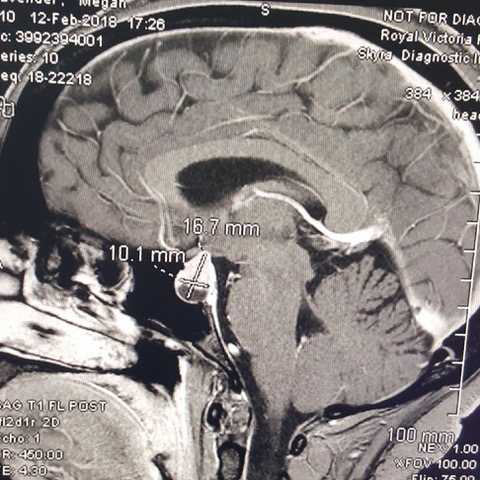
“She said, ‘I think I may have an idea of what is causing your symptoms, but I want all the results back first before sharing with you.’” Megan had the MRI four months later.
While waiting for the scan, the medication she had been taking was working. Within six weeks, her menstrual cycle had re-started, and normally continued each subsequent month.
On February 23rd, 2018, the doctor’s suspicions were confirmed.
Megan had a large pituitary tumour. It measured 10 millimeters by 16 millimeters, and was thought to be secreting prolactin, the hormone responsible for her prolonged lactation.
“My other symptoms were also caused by being diagnosed with Cushing’s Disease. I was urgently booked in to see a neurosurgeon at St. Michael’s hospital within the month,” states Megan.
She is very grateful to the neurosurgeon, who showed remarkable compassion during the first meeting.
“He made me feel at ease and explained how the procedure is non-invasive,” she expresses.
Although Megan’s tumour was large, it was attached in the form of a raindrop; snipping it off and removing it in its entirety was very likely.
Over the next two months, Megan made six more trips to St. Michael’s hospital (an almost 2 hour drive each way) to meet with her team of doctors which included an ENT specialist, a neuro-optometrist, and three endocrinologists.
She endured many tests which involved bloodwork, glucose suppression, 24-hour urine screenings, multiple eye exams, ultrasounds, MRI, and CT scan. All the tests which involved needles for blood draws or injection of contrast dye were difficult. She had small veins, and almost always needed the IV specialist to be called upon– unfortunately, a nurse had once inserted a needle, which had punctured through the entire vein.
“May 28th, 2018, was surgery day. I was in my hospital gown, hooked up to an IV in the OR waiting room. As everyone else was wheeled away one by one, I was left still waiting,” Megan states. 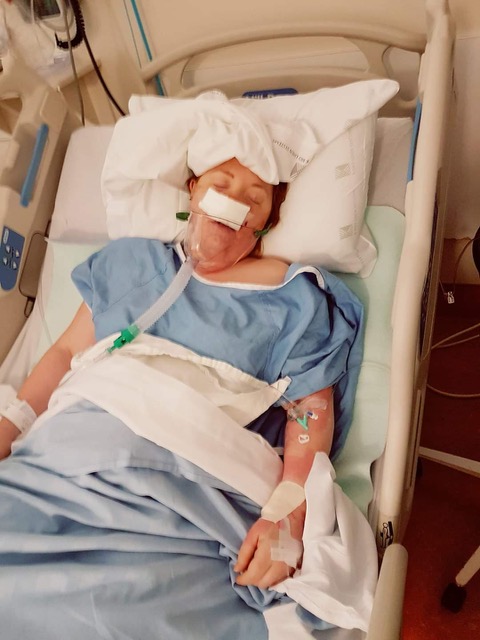
She describes it as “a scene from a movie– the janitor came in and started sweeping the empty floor, but realizing I was still there, he seemed a little less shocked when the neurosurgeon approached my bedside.”
“The doctor explained how everyone was ready to go, but unfortunately, they had a shortage of ER nurses available to assist my surgery. I was given two options.” says Megan.
She could either go home and the surgery would be rescheduled for a later date or be admitted to hospital until the next operating room was available.
There was no guarantee that the situation would not arise again. With family already taking time off work to watch her children and a plan to aid in her recovery, Megan decided to be admitted.
On June 1st, 2018, she underwent a transsphenoidal resection of a macroadenoma in her pituitary gland.
The procedure took four hours to complete and the whole tumour was successfully removed. There appeared to be no complications.
“Recovery was going well, but the nurses noticed I was consuming more liquids than I should, around five liters a day,” says Megan.
She had developed diabetes insipidus from the surgery, as the hormone production of ADH is stopped to the kidneys. This released urine instead of holding onto it to retain water for the body.
The nurses administered Megan some medication to help urine retention, which she had to continue taking at home until her production of ADH was back to normal.
Three days post-surgery, she was discharged from the hospital with a cotton bandage she had to wear under her nose.
“The kids enjoyed drawing mustaches on them. Each time I had to change the bandage,” she laughs.
Twelve days following her operation, she felt pressure in her head. After it had persisted for a few hours, she went to the hospital, where she was immediately sent for a CT scan. 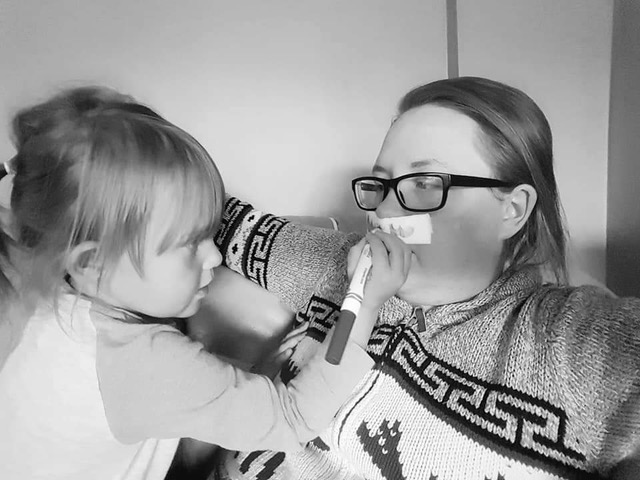
“The results showed just a lot of swelling, which the doctor said was probably still there from surgery. I was told to go home, rest and take some Tylenol if needed,” remembers Megan.
A week later, she returned to St. Michael’s to see her ENT, who removed the stints in her nose. She couldn’t smell, but she was able to breathe through her nose again.
The next day, her children had returned to school and all her family were back to work. Home alone, she decided to fold some laundry.
“When I bent over to pick up the first item of clothing, I heard a ‘pop’ in my nose,” Megan recalls. “Suddenly, a gush of blood started to pour out profusely.”
She tried to stop the bleeding as she approached the bathroom, but realized she needed urgent medical attention.
“I called 911, and the operator thought I was having a normal nosebleed I guess, because he hung up on me saying the ambulance would be there shortly,” she explains.
Megan called her husband and told him he needed to come home now! She remembers fainting twice as the paramedics clamped her nose and took her vitals.
She was rushed to the hospital, because there were concerns that she had lost an excessive amount of blood.
“Thankfully, I came around as my vitals normalized and I just had to take iron pills for the next week to bring my blood counts back up,” Megan says.
After the incident, her neurosurgeon assessed her the next day, checking everything, making sure she was fit to be at home. Her ENT applied some dissolvable packaging on the opening, so that it could close and heal.
“They thought the pressure I had in my head the week prior may have been a small hemorrhage,” she says. “When my stints came out, the incision site had not fully healed yet and popped open.”
Megan reports that since that day, her recovery has been “going great” and is grateful to her family and the medical team who demonstrated exemplary care. 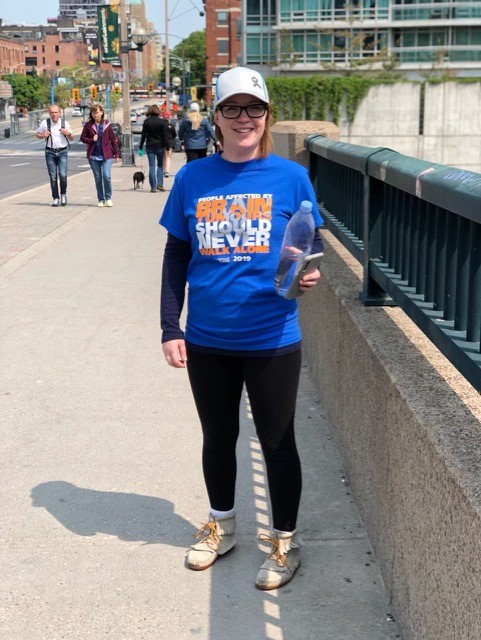
“I have lost all the weight, the Cushing’s symptoms have subsided, and my hormone levels are where they should be. I’m feeling energized and myself again!” Megan rejoices.
Her MRI one-year post-surgery showed no regrowth. That day also happened to coincide with the 2019 Brain Tumour Walk.
“I discovered the event on Facebook, along with this amazing community of brain tumour survivors and support groups. The walk brings more public awareness to the community,” expresses Megan, who participates with her family in the Toronto, and The Heart of Georgian Bay Brain Tumour Walks.
“When we come together and walk as a large group, it gains interest and draws attention to the cause. We can share our message of hope to end brain tumours, and sadly, the loss of loved ones that affects us all,” she explains.
“I met a wonderful lady named Roberta, and her son Brandon who is a Brain Tumour Warrior. They run Bell Falls Family Campground in Midland. Year two post-surgery, my family and I decided to camp there, and have gone there every year since.”
Feeling the need to give back to the community, and with the COVID pandemic at its height, Megan noted that there were no specific Brain Tumour Awareness masks available to wear.
Megan encourages those wanting to fundraise for the brain tumour community to find something that will not only raise money for the foundation, but which can help, improve, bring hope, or solve a problem for the brain tumour community.
“As a photographer, I was once told to look at the world from a different angle. Since then, I have adapted this into my daily life. I used my creativity and designed four different printed masks that I brought to the brain tumour community,” she explains, having various influencers who nourish her passions and creativity.
These masks were double-layer cotton, featuring a pocket for a replacement filter; a metal nose clip, adjustable ear straps, and shaped for breathability and comfort.
“Over 150 people purchased them across Canada, totalling over 400 masks made and all the profits were donated to the foundation” Megan proudly states.
“The following year, I once again used my creativity and created a crocheted Brain Bunny. It is wearing one of my printed masks, a blue knit “Survivor” walk t-shirt, and a knit Hope hat. These bunnies have been selling the moment I have another one made.” 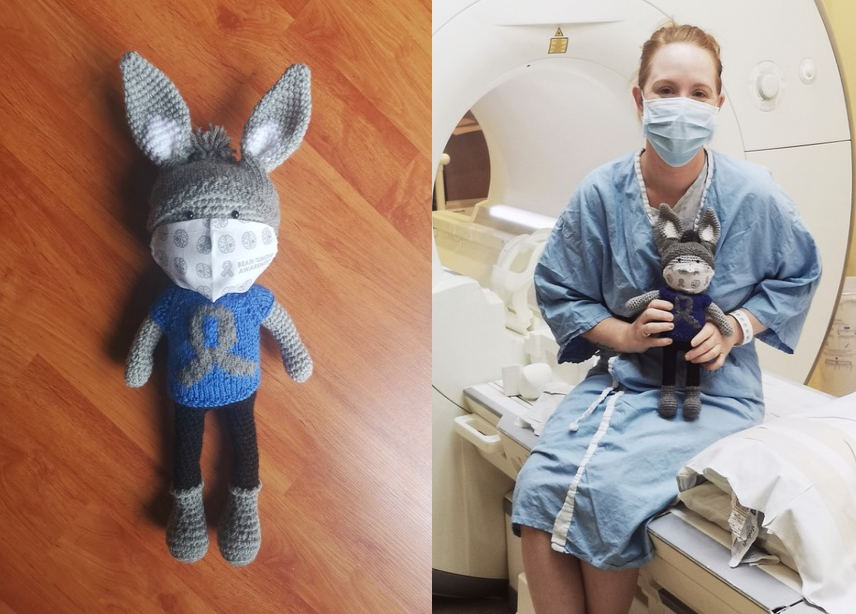
She will be selling the Brain Bunnies and is accepting pledges to make more of them. Those that have been generously pledged have gone to Pediatric Warriors still battling or surviving a brain tumour or brain cancer. They give comfort when it is needed most, as shown in her photo hanging onto one before her yearly MRI.
“The MRI machine isn’t so scary with a Brain Bunny by your side,” Megan compassionately expresses.
One hundred percent of the sales and 100% of the pledges donated on her page from her crocheted Brain Bunnies is being donated directly to Brain Tumour Foundation of Canada, for the 2022 Virtual Walk and every subsequent walk.
“Hope is caring. Hope is advancing research, hope is for a better tomorrow, and hope is to see a smile through tears,” Megan says.
On behalf of The Brain Tumour Foundation of Canada, and the Brain Tumour Community:
Thank you, Megan Cavender!